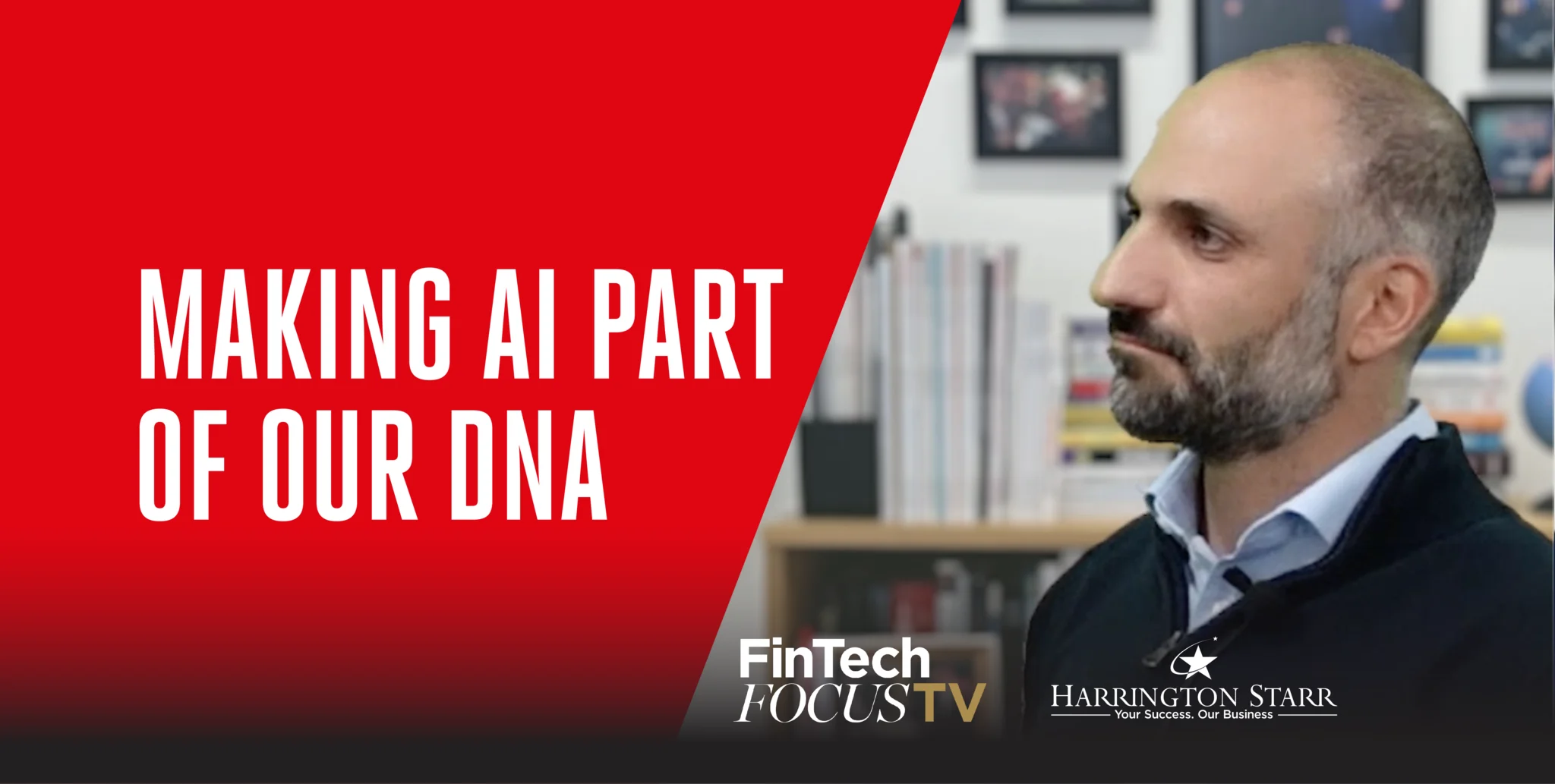
AI, Quant Finance, and Human Oversight
The latest episode of FinTech Focus TV, recorded live at Quant Strats 2025, brings together two perspectives at the forefront of financial technology: the evolving world of large language models in quant finance and the realities of how these technologies are being adopted by the buy side, sell side, and trading communities. Hosted by Oli, the conversation with Yichuan Zhang, Co-Founder, Chief Executive Officer and Chief Research Officer at Boltzbit, offers rare clarity on the progress, challenges, and practical implications of AI within the financial domain.
From the outset, this discussion stands apart because it deals not with theoretical speculation about artificial intelligence, but with its grounded application in financial institutions that handle enormous quantities of data. Yichuan’s experience spans more than fifteen years as an AI researcher, with a strong focus on deep generative models before the current wave of generative AI even began. His work at Google and the University of Cambridge shaped the expertise that now drives Boltzbit’s mission: enabling non-tech, data-heavy industries to use customised large language models trained on their own proprietary information. This ambition aligns closely with the challenges facing financial firms, where staggering amounts of data, wide-ranging tasks, and deeply embedded workflows create the perfect environment for targeted AI deployment.
Custom Large Language Models in Data-Rich Financial Environments
Yichuan explains that Boltzbit was founded on a straightforward but ambitious principle: bringing customised language models to organisations that hold substantial amounts of data but do not necessarily have the technological infrastructure to build these models from scratch. In financial services, this need is particularly pronounced. The sector contains vast quantities of information, yet many of its text-based, reasoning-heavy processes still rely on labour-intensive human intervention. Tasks connected to document analysis, reasoning, and fact extraction are often repeated manually and lack scalable tooling.
Traditional rule-based systems, according to Yichuan, have not fully solved these problems. While they can handle simple and structured tasks, they are limited in their ability to navigate the complex reasoning required for large bodies of unstructured financial text. The emergence of large language models changes this dynamic, introducing the possibility of automating tasks that previously depended entirely on people.
Yet Yichuan emphasises that deploying such technology is not as simple as applying a general-purpose model. Financial institutions require models that run on their own proprietary data, respect their internal logic, and integrate into workflows that have been refined over years. In his view, it is not enough to provide a chatbot or universal interface and expect it to satisfy the intricate demands of investment research or trading. Instead, Boltzbit focuses on building flexible product structures that allow firms to design workflows aligned to their own operating environments.
How Quant Firms Are Responding to AI Integration
Oli raises an important observation about the quant sector: buy-side firms, proprietary trading groups, and market makers often rely on deeply structured research systems that have been optimised for accuracy and repeatability. Integrating tools built for unstructured data may disrupt these established patterns, creating both opportunities and questions about reliability.
Yichuan recognises this tension. Many financial firms have historically performed text-based reasoning manually, not because they preferred it, but because the available tooling lacked the accuracy required for sensitive financial applications. He acknowledges that accuracy is paramount in financial decision-making, and firms remain cautious about stepping too far away from human logic and control.
Yet the appearance of large language models has shifted the landscape significantly. Suddenly, automation is no longer limited to purely structured tasks. Firms see that it may be possible to reduce large volumes of manual labour while still maintaining oversight. The key challenge becomes how to implement these systems in ways that remain safe, controlled, and well-supervised. Yichuan explains that Boltzbit works closely with clients to ensure that the journey from manual processes to AI-supported processes is managed deliberately and responsibly.
The Future Structure of Quant Teams
Oli then turns to a crucial point: as these technologies become more capable, how will talent needs change across financial institutions? Historically, firms have required extensive modelling expertise, often hiring specialists in quantitative architecture, statistical design, and mathematical modelling. With the introduction of sophisticated AI systems, will firms begin hiring different types of people?
Yichuan offers a measured response. He does not believe the shift will be as dramatic as many predictions suggest. While AI will undoubtedly have an impact on team structures, he argues that the role of human expertise remains essential. Tasks may be automated, but many of them will still require human supervision, interpretation, and domain knowledge. AI will not function as a self-governing system; instead, humans will play a central role in monitoring and guiding it.
He stresses that as a CEO, he would never be comfortable handing complete operational responsibility to a system he cannot interpret or oversee. The notion of a black-box model making autonomous decisions is, in his view, far from desirable and not something most business leaders would support. In practice, firms will maintain human responsibility at every stage of the process.
In this sense, quant teams will not vanish or be replaced. Their day-to-day work may evolve, with humans spending more time supervising AI, refining workflows, and interpreting outcomes rather than manually performing every detail themselves. Yet the fundamental requirement for human skill and insight will endure. For quant researchers, analysts, and technologists, this reinforces the importance of domain expertise, critical reasoning, and the ability to oversee automated systems effectively.
Working With Clients to Bridge the Gap Between Research and Trading
Throughout the episode, Yichuan presents a realistic and grounded picture of AI integration. One of the most interesting insights arises when Oli asks about the working relationship between Boltzbit and its clients, particularly in bridging the gap between AI research and the practicalities of trading environments.
Yichuan divides the challenge into two connected parts. The first involves continually improving the technology itself. Boltzbit works to make large language models cheaper to run, faster to train, and more able to learn quickly from human feedback. Faster feedback loops enable more effective real-world use, which is essential in environments that operate at high speed and require quick adaptation.
The second part concerns product strategy. Rather than prescribing a rigid interface or tool, Boltzbit aims to build flexible structures that asset managers and trading firms can adapt to their existing workflows. According to Yichuan, financial institutions operate with their own styles of pipeline, their own definitions of acceptable error rates, and their own expectations around scalability. To serve buy-side firms, trading groups, and sell-side institutions, the product must be adaptable enough to reflect these varying needs.
Diverse Use Cases Across the Buy Side, Sell Side, and Trading Firms
One of the themes running through the conversation is the diversity of use cases across different types of financial institutions. Yichuan explains that while buy-side firms, traders, and sell-side desks may look at similar types of information, they encounter it at different scales and under different constraints. Buy-side institutions may operate large batch processes, whereas traders manage vast numbers of transactions, and sell-side teams extract signals from fast-moving data.
Each group therefore brings its own level of error tolerance, scalability requirements, and workflow style. This variation reinforces the need for AI systems that can adapt to different environments rather than offering a single one-size-fits-all tool.
Separating Hype from Reality in AI
Oli raises the issue of hype, particularly within discussions of artificial intelligence. Yichuan provides a balanced view. He acknowledges that hype exists, especially around valuations of AI companies. However, he argues that the capabilities of the underlying technology are not exaggerated. According to Yichuan, AI can already accomplish tasks that many people would not expect it to handle.
The real challenge lies in the last stage of adoption: turning this technological potential into production-level systems. This process requires substantial effort, design, and collaboration. While AI’s abilities are impressive, the journey from prototype to stable deployment requires careful work, and this is where collaboration between technology providers and financial institutions becomes essential.
How Adoption Has Changed Within a Year
One of the most striking insights from Yichuan is the rapid change in how clients approach AI. Twelve months ago, many clients did not know exactly what they wanted. They approached Boltzbit with the intention to experiment broadly. Six months ago, clients began arriving with specific pilot concepts. Today, firms come with experience from prototypes they have already tested and now seek production-ready systems.
This progression indicates a shift from curiosity to experimentation, and now from experimentation to operational readiness. Yichuan attributes some of this acceleration to the widespread influence of ChatGPT, which made prototyping fast, accessible, and familiar for many organisations. The growing clarity around use cases reflects a maturing understanding within the financial sector about how AI can be applied meaningfully.
Looking Ahead to the Next Three to Five Years
When Oli asks Yichuan to speculate about the future, Yichuan notes that predicting three to five years ahead in AI is challenging. Even so, he expects AI to become more like infrastructure: something firms use as a fundamental component of their operations. The types of tasks AI can handle will become clearer, and firms will better understand which tasks require human oversight and which can be automated with confidence.
This maturing mindset will shape how firms think about adoption, design workflows, and allocate resources. The progression will not eliminate human involvement, but it will embed AI more deeply into everyday processes.
The Value of Conferences and Industry Insight
As the episode concludes, Oli asks what Yichuan is most interested in learning from the conference. Yichuan emphasises that hearing about specific use cases, requirements for model quality, and approaches to resource allocation is incredibly valuable. Understanding how institutions think about these issues helps Boltzbit design products that align with client needs. For Yichuan, the shift from theoretical conversation to practical application is one of the most significant developments, and this conference environment provides clarity on priorities across the industry.





